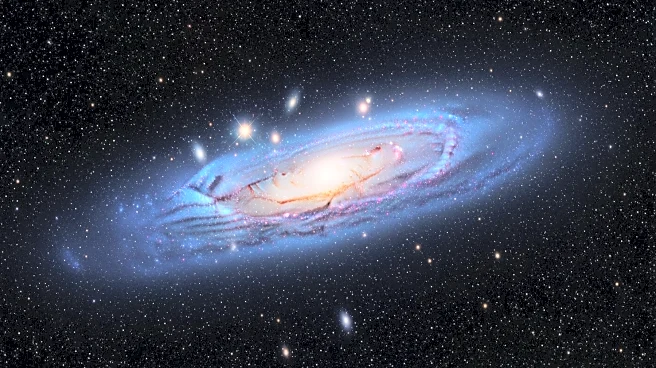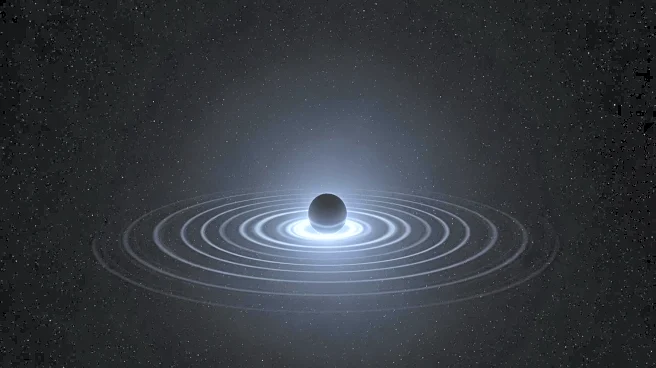What's Happening?
An international team of physicists, including researchers from Washington University in St. Louis, has utilized a high-altitude telescope to gather new measurements on black holes. The telescope, known
as XL-Calibur, was directed towards Cygnus X-1, a black hole located approximately 7,000 light-years away. The observations aim to test advanced computer simulations of physical processes near black holes. XL-Calibur measures the polarization of light, providing insights into the behavior of hot gas and debris around black holes. The findings, published in The Astrophysical Journal, report the most accurate measurement of hard X-ray polarization from Cygnus X-1. The telescope's July 2024 flight from Sweden to Canada also collected data from the Crab pulsar, setting technical milestones. The team plans further observations from Antarctica in 2027 to expand their understanding of matter in extreme environments.
Why It's Important?
The research conducted by Washington University and its collaborators is significant for advancing the understanding of black hole physics. By measuring the polarization of light, scientists can gain insights into the behavior of matter in extreme conditions, which is crucial for testing theoretical models. The findings could help solve longstanding questions about black hole physics, potentially leading to breakthroughs in astrophysics. The collaboration involves multiple institutions, highlighting the global effort to study cosmic phenomena. The data collected by XL-Calibur, combined with information from NASA satellites, may provide a comprehensive understanding of black holes, benefiting the scientific community and enhancing knowledge of the universe.
What's Next?
The team plans to launch XL-Calibur from Antarctica in 2027 to observe additional black holes and neutron stars. This expanded range of study aims to create a more complete picture of matter behavior in extreme environments. The collaboration with institutions worldwide continues, with hopes to build on the successes of previous missions. Future observations may provide enough data to address unresolved questions in black hole physics, contributing to the field of astrophysics. The ongoing research and upcoming missions underscore the commitment to advancing scientific knowledge and understanding of the universe.













